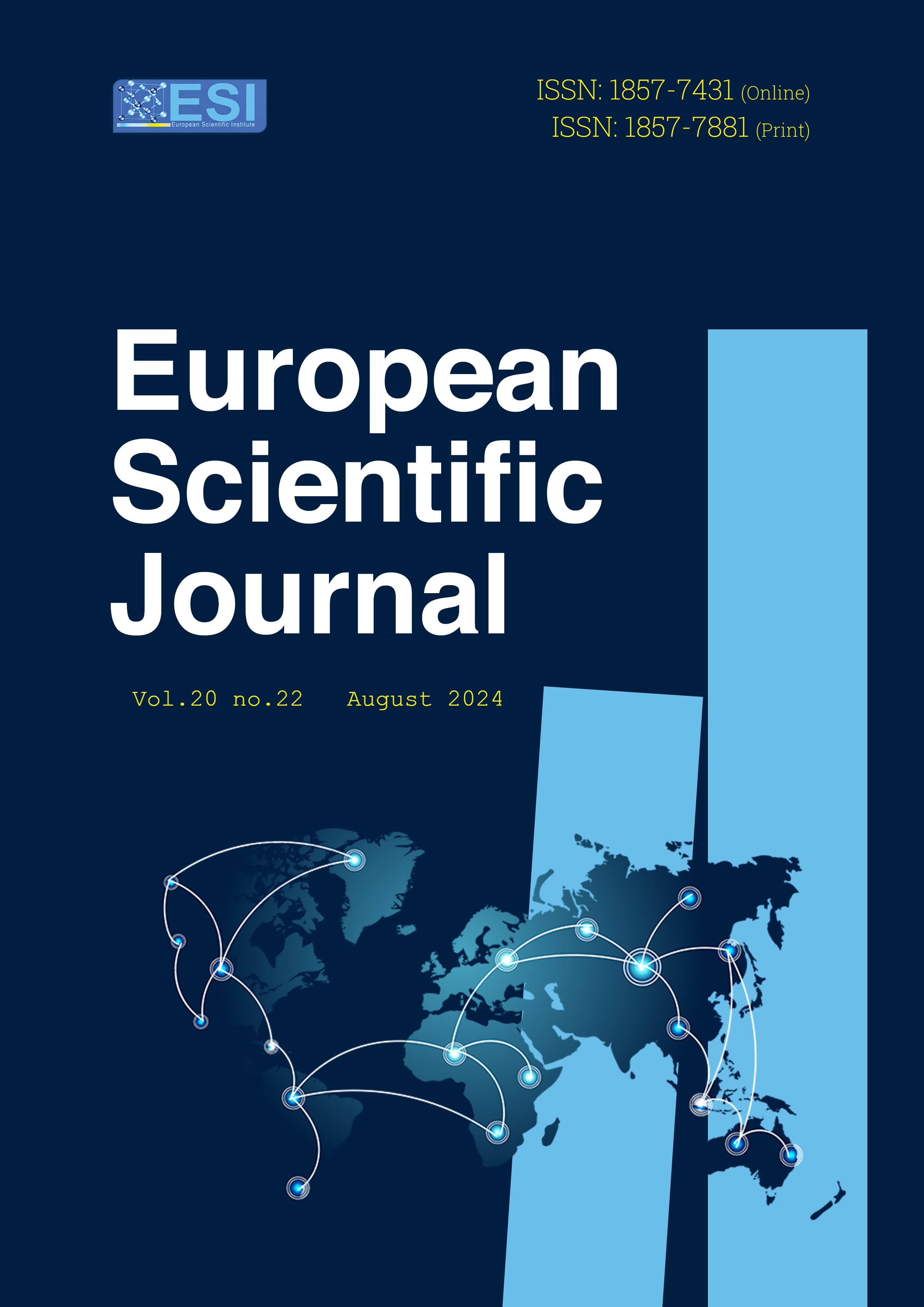The Impact of Economic Growth, Energy and Electricity Consumption Usage on CO2 Emissions: A Case Study of Morocco
Abstract
Given the uncontrolled increase in environmental pollution and degradation of environmental quality worldwide, the environmental impact of economic growth has become a major focus in recent decades the most important question is: How does economic growth affect environmental quality? This study addressed this issue, examining the nature of the long-run relationship between economic growth per capita and pollutant emissions in Morocco. For this reason, the ARDL (Autoregressive Distributed Lag) modeling approach was used from 1990 to 2020. This approach mainly includes time series analysis and cointegration. The relationship tested introduces four variables: carbon dioxide (CO2), energy consumption per capita, electricity consumption per capita and GDP per capita. The main results indicate a long-term relationship between economic growth, energy consumption and CO2 emissions, indicating that a 1% increase in electricity consumption increases CO2 emissions by 0.36%. On the other hand, a 1% increase in GDP per capita increases CO2 emissions by 0.76%, and a 1% increase in energy consumption increases emissions by 2.06%. Thus, all variables show a significant effect.
In conclusion, the strategy that Morocco needs to follow to solve our problems is to prioritize investment in research, development and artificial intelligence, while providing adequate training in energy-related fields.
Downloads
Metrics
PlumX Statistics
References
2. Ang J., (2008). Economic development, pollutant emissions and energy consumption in Malaysia. Journal of Policy Modeling, 30, 271 - 278.
3. Andreoni, J., Levinson, A. (2001), « The simple analytics of the environmental Kuznets curve », Journal of Public Economics 80, 269-286
4. El Alaoui, A. and H. Nekrech (2018). Economic Growth and Environment: An Empirical Analysis Applied to Morocco, Algeria, Tunisia, and Egypt. Economics Human and Environmental Security in the Era of Global Risks. Ed. Springer International Publishing
5. Engle R., Granger C., (1987). Co-integration and Error Correction: Representation, Estimation, and Testing. Econometrica, Vol. 55, issue 2, pages 251-76.
6. Dinda, S., Coondoo, D., Pal, M. (2000), « Air Quality and Economic Growth: An Empirical Study », Ecological Economics 34, 409-423.
7. Dinda, S. (2004), « Environmental Kuznets Curve Hypothesis : A Survey », Ecological Economics 49 (4), 431-455.
8. Geetilaxmi M., Giri A-K., (2015). Energy consumption, economic growth and CO2 emissions: Empirical evidence from India. The Empirical Econometrics and Quantitative Economics Letters, volume 4, Number 1, (March 2015): pp. 17 - 32. ISSN 2286 - 7147.
9. Grossman G., Krueger A., (1995). Economic environment and the economic growth. Quarterly Journal of Economics, Vol. 110, No. 2, pp. 353-377.
10. International Energy Agency (IEA) (2016) Journal: CO2 emissions from fuel combustion. Statistics.
11. Jalil A, Mahmud S.F (2009). Envrionment Kuznets curve for CO2 emissions: A co-integration analysis for China. Energy Policy, The International Journal of the Political, Economic, Planning, Environmental and Social Aspects of Energy.
12. Johansen S., (1988). Statistical analysis of co-integration vectors. Journal of Economic Dynamics and Control, Vol. 12, issue 2-3, pages 231-254.
13. Konrad Adenauer Stiftung (2012). Environment and climate change in Morocco: Diagnosis and Perspectives.
14. Kuznets, S. (1955), "Economic growth and income inequality", American Economic Review, 49, 1- 28.
15. Maamar S, (2009). The Mediterranean area and air pollution: An econometric investigation. Paper presented at the Quatrième Colloque International de l'Institut Supérieur de Gestion de Sousse Finance et Stratégie de Développement March 27 & 28, 2009, Tunisia.
16. Masih AMM, Masih R (1997) On temporal causal relationship between energy consumption, real income and prices; some new evidence from Asian energy dependent nics based on a multivariate cointegration/vector error correction approach. J Policy Model 19:417–440
17. Panayotou, T. (1993) « Empirical tests and policy analysis of environmental degradation at different stages of economic development », Working Paper Series 238 Technology and Employment Programme, International Labor Office. Geneva.
18. Phillips P, Perron P (1988) Testing for a unit root in time series regression. Biometrica 75:335-346
19. Pesaran M. H., Shin Y., (1999). An autoregressive distributed lag modeling approach to cointegration analysis". Cambridge University Press, Cambridge Chapter II. Specific Environmental and Social Impact Assessment – Vol. 2: Main Text project NOORo IV Ouarzazate 70 MW Photovoltaic Power Plant 2017, Morocco
20. UNFCCC, (2015). Nationally Determined Contribution under the UNFCCC. Morocco - Cropper M., Griffiths C,. (1994). "The Interaction of Population Growth and Environmental Quality". American Economic Review, vol. 84, issue 2, pages 250-54.
21. World Trade Organization, WTO (1999)
22. World Bank (2021), « Morocco's population growth rate »
Copyright (c) 2024 Wafa Kerfal, Aicha El Alaoui

This work is licensed under a Creative Commons Attribution 4.0 International License.








